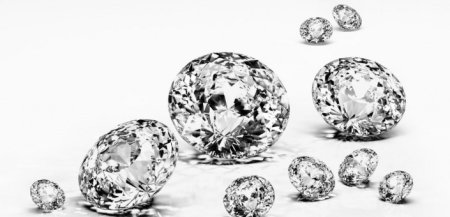Franchising, retail, business

21/09/2015
Steven Fischer, director of Image, Style & Design Studio, debates the distinctions between Connoisseur Luxury and Mass Luxury.
Nine years back I had a bicycle frame built by Waterford Precision Cycles in Wisconsin, started by Richard Schwinn, grandson of the founder of the famous American bicycle maker. The Schwinn company was sold to investors years ago, and the Waterford facility is where they originally produced the Paramount racing frames.
In the course of the extensive fitting for that bicycle, the technician told me: “You know, what you are getting is really a luxury product – no one really needs a custom-built frame.”
A custom-built bicycle as luxury? Hmm. How can luxury be considered a rather common handbag and a bicycle? This gets confusing real fast. It might help in our deliberations on luxury to make the distinction between Connoisseur Luxury and Mass Luxury.
“ Connoisseur Luxury is extremely limited in its distribution, and it is rarely, if ever, discounted ”
Connoisseur Luxury is what typically comes to mind for luxury products. It features many hours of toiling over the production of the product, a commitment to quality at whatever cost, unparalleled aesthetics and represents the finest possible within the product class. In the world of automobiles, a Rolls Royce or Ferrari can be considered a Connoisseur Luxury item.
Connoisseur Luxury is extremely limited in its distribution, and it is rarely, if ever, discounted. It is typically produced by family-owned firms, and sometimes by the same family for many generations. Excel spreadsheets, Powerpoint slide shows and cost engineering are foreign concepts to Connoisseur Luxury. Pursuing the very finest in their area is all that they know.
After a couple generations of the Connoisseur luxury firms’ existence, it is typical of the third or fourth generation to lose interest in maintaining the same quality commitment, or they simply don’t wish to maintain the business – so they sell it. This is natural and healthy for the heirs – but poses challenges to those who acquire the firm – usually the investment community.
“ In the world of Mass Luxury, massive advertising, flagship retail and cost engineering rule the day ”
Over the past couple decades, the investment community awoke to the unusually high margins found in luxury firms. And, in the pursuit of the very finest, the original luxury firms didn’t pay much attention to matters like operations – they didn’t need to. It became rather easy pickings and formulaic for an investment house – buy an established luxury maker, shore up its operational efficiency, advertise the heck out of the brand, open hundreds of stores worldwide and a couple years later sell it for multiples what was originally paid. Word got out, and now there is increasing competition to acquire those brands, in a world where most of the brands that might be for sale have already been sold off and are now part of larger holding companies.
In the process, we now have a new type of luxury – Mass Luxury. In the world of Mass Luxury, Excel spreadsheets, Powerpoint presentations, massive advertising, flagship retail and cost engineering rule the day. They are run like Consumer Packaged Goods firms – more familiar with selling toothpaste at a discount than the fine artisanal craft of creating something truly special.
Their customers are likely to visit their shops just after ingesting a Big Mac. In an effort to deliver results to the ever-demanding investment community, they are constantly seeking new markets for their products, new frontiers. Mass Luxury brands are less concerned with where the product is made, and focus more on where the cost of production is lowest.
As they produce products in the tens of thousands, what doesn’t sell gets discounted, or even sold to companies like TJX in the US, which end up steeply discounting unsold inventory. All the while these firms tout themselves as “Luxury”, when the more descriptive word would be “Mass Luxury”. No wonder the consumer is at times confused. And, those original consumers of the previous Connoisseur label are left highly disappointed.
Amongst this development, a new type of executive has had to emerge – one who understands the fine points of the emotional connection of luxury and working with creative teams while at the same time knows how to squeeze margins and efficiency out of the organization, much like selling toothpaste. This is not easy – and those executives who can successfully pull this off are rare indeed.
“ Send artisans to top shopping destinations to demonstrate the craft behind the product ”
What are ways the Mass Luxury house can maintain some of the magic of the Connoisseur Luxury days?
a. Create a special sub-brand that adheres to the Connoisseur ethos. For a fashion label, this can be a couture line.
b. Send artisans to top shopping destinations to demonstrate the craft behind the product. Though in this case it is important to ensure it is real and authentic, and not to let the publicity department make it look overly produced.
c. Resist the urge to lower production costs, though this runs against what the investors will be insisting upon.
In the case of that fine Waterford bicycle kitted out with Campagnolo components and Brooks saddle that I ride nearly every day?
It is certainly Connoisseur Luxury – and in this case, an heir decided to continue in the family business after the eponymous brand was sold off to investment interests, and in that case, rather poorly managed as an acquisition.
Fonte:http://luxurysociety.com/articles/2015/09/connoisseur-luxury-vs-mass-luxury